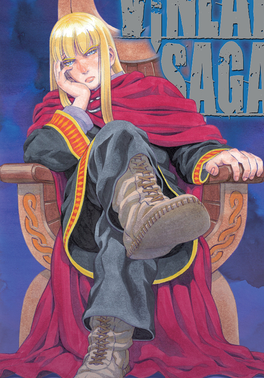Welcome back to the blog! This is a segment I started to help new and casual readers of manga understand things that are mistranslated or lost crossing cultures. In this next segment, I want to cover honorifics.
You might have noticed little words tacked onto the end of names in your reading. These “little words” are called honorifics and adding honorifics to the ends of names and words is commonplace in Japanese culture. In Japan, it is considered rude to speak to or refer to someone without an honorific attached to their name. The honorific goes at the end of the word and the most common ones are “san,” “kun,” “chan,” or “sama” (for example: if your name were John Smith, your peers would most likely address you/refer to you as “Smith-san”).
“San” would be your everyday honorific to refer to coworkers, classmates, friends, acquaintances, or strangers. “Kun” is used by someone who has seniority to someone who does not, and is used exclusively toward males. People who are younger than the speaker, a year behind in school, a boyfriend, or a junior at work could be addressed with the honorific “kun” at the end of their name. Oppositely, the honorific “senpai” refers to someone older than you, more experienced, or a mentor. “Senpai” can also be used on its own without being attached to another word, unlike most other honorifics. “Senpai” translates to “former born” so it is used to refer to someone who is of a senior status to the speaker. The same can be said for “Sensei” as it translates to “teacher” and can be attached to the end of your teacher’s name or used on its own.
The honorific “chan” is used to express that the speaker finds the person being spoken to as endearing. This is mostly reserved for female adolescents and is usually used for young children, close friends, younger siblings, babies, grandparents, or cute animals. “Sama” is a more formal and rare honorific reserved more for divine entities, guests, or customers (such as a sports venue announcer addressing members of the audience), and sometimes towards people one greatly admires. It is considered very respectful and can be used for people of higher rank than yourself or royalty.
In Japan, first names are not normally used. In school, or at work, people would refer to one another by last name followed by the appropriate honorific. First names are usually only used by people you have an intimate relationship with such as family, or close friends who visit each other’s houses. It’s just a cultural thing. One can imagine being at a friend’s house and calling out to said friend using their last name and their mother, father, and siblings all with the same name respond to it. Out of necessity then, a friend close enough to visit their home would need to distinguish between the family members by using their friend’s given name.
In the series Spy x Family one of the main characters (Loid) adopts a child and enters a marriage of convenience with a woman out of a need for cover as he is a spy from another country. Loid usually refers to his wife by her first name with an honorific, “Yor-san” since they share the same last name of “Forger”. However, when other people are around he refers to her by her first name with no honorific (“Yor”) to make them seem closer than they actually are in order to make his cover family more believable. This is a small detail that is easily missed if you do not understand Japanese and the social implications of using someone’s first name without an honorific.
Here in America, we use honorifics a little differently. Instead of putting honorifics on the end of someone’s last name, we add a “Mister, Missus, or Miss.” before the last name to show respect. If the person being spoken to is a doctor or teacher we use “Doctor” or “Professor” before the last name to accomplish the same thing as the people of Japan with their respective honorifics. I hope you found this segment helpful, and that you now better understand what you’re reading. I am hoping to bridge the gap between the culture of you, the reader, and the author from overseas with this blog series. If you have any questions or want to talk more about manga, anime, or Japanese culture come find me in the library, and let’s talk. LCI (Library Connection, Inc.) has access to a large collection of manga that we share between libraries so use your library card to place holds to your heart’s content. I hope as I continue to write and inform about manga, local interest will grow and we can grow the collection and increase circulation of it. Until then, happy reading!
– Dillon Willhelm, Library Associate in Information Services and Adult Learning and Russell’s own Anime and Manga connoisseur.


Leave a comment